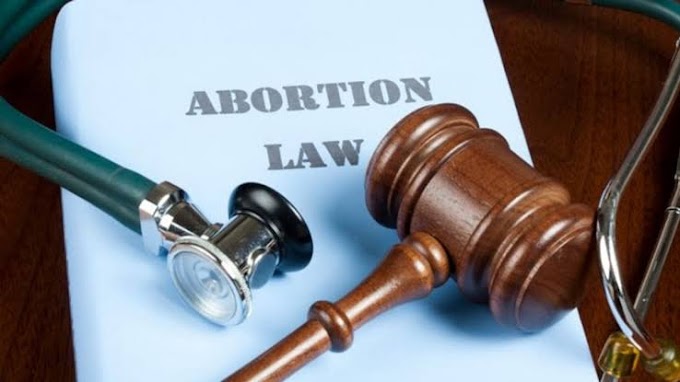OWING TO WATER SCARCITY
Author: DHRUVI JAIN, STUDENT AT BM LAW COLLEGE, JODHPUR
Earth’s natural resources are the Air, water, soil, plants, minerals, animals must be protected and the only method to preserve them is conservation.
The environment is the air, water, and land around you. All species that give food, water, oxygen, and other requirements are included. Environment offers all life's elements, living and nonliving. We need water to survive. Environment and humanity cannot function without water. Everything comes from it. Water, Earth's most vital and valuable resource, is renewable and will never run out. Water is Earth's only renewable resource. Air quality is as vital to human and animal health as water.
Water Pollution
According to Section 2(e) of Water Prevention and Control of Pollution Act, 1974, defines the Water pollution, “Such contamination of water or such alteration of the physical, chemical or biological properties of water or such discharge of any sewage or trade effluent or of any other liquid, gaseous or solid substance into water as may or is likely to, create a nuisance or render such water harmful or injurious to public health or safety, or to domestic, commercial, industrial, agricultural or other legitimate user, or to the life and health of animals or plants or of aquatic organism.”
Contamination of water has a negative effect on both humans and the ecosystem, and consuming contaminated water can also result in death. A variety of diseases, including typhoid fever, cholera, and hepatitis, can be transmitted by contaminated water. These diseases can be contracted by ingesting or imbibing contaminated water.
The Indian states that are now experiencing water limitations:
Numerous towns and villages throughout various states are consistently grappling with the escalating issue of water shortage, which persists and exacerbates over time. There is a pressing need for water conservation in order to mitigate water shortage within our nation and save this vital resource for future generations.
There are many states and cities in India that are now experiencing water shortage:
Rajasthan has dry desert environment. Rajasthan has 33 districts, 19 of which have water shortages impacting 17,000 villages. The government delivers water to towns and villages through trains and tankers and has many other programs and plans to help the people, but they must be done properly. The population utilizes handpumps and river reservoirs, but groundwater is decreasing and the surface is developed. The aquifer does not provide drinkable water for the inhabitants, therefore women must go several kilometers to another community for water, and in some areas, water is only given every 10 days. Several Rajasthani villages have been declared drought-stricken.
Water is scarce in several areas in Maharashtra as well. For example, in the Palghar district, residents must trek kilometers to obtain water. Since there were many tankers deployed by the government the previous year, the government now gives the villagers the greatest number of tankers in their village in an effort to lessen the demand for freshwater for drinking. However, both urban and rural communities must practice water conservation.
Gujarat is like other states. Water is scarce in rural Gujarat. Gujarat has 5% of the country's population and 2% of its water. Monsoon was bad in Gujarat, where there is no conservation strategy and the government has plans but doesn't follow them. Implement a water conservation strategy to decrease water shortages. To raise awareness and preserve this crucial resource, the state government must pass stringent water conservation laws.
As the natural resources are freely accessible to everyone, they are over-exploited by humans. In the state of Jharkhand, water exploitation in the name of development is high, and the people must be aware of the importance of water conservation. The Jharkhand public is also dependent on the government-provided tankers which make the public fight for the water. Population is also a factor in water scarcity, but water must not be wasted for any purpose. The Niti Aayog has published the water management index for the enhancement and conservation of surface water.
The state of Uttar Pradesh has been identified as experiencing a significant water shortage. The current state of the ponds, lakes, rivers, and hand pumps is characterized by desiccation, resulting in limited availability of potable water in these water bodies. Approximately 50% of the population of UP relies on tubewells for their daily water consumption. The current level of home sanitation and drainage services in Uttar Pradesh (UP) is very unfavorable compared to other states in India.
Chennai, having a far greater population than other cities and states, depends heavily on tankers for water. Due of its scarcity, soil-contaminated subterranean water is unsafe to drink. Water tankers are expensive and often prohibitive for homeowners. Rural residents suffer the above issues, whereas urban places provide more facilities to a larger population. The government is implementing an ineffective rainwater collecting plan. Kerala gave Tamil Nadu 2 million gallons of water.
Conclusion
The use of water conservation practices contributes to the resolution of the water shortage problem by reducing freshwater consumption. Water conservation encompasses a variety of techniques aimed at mitigating pollution and augmenting the supply of freshwater for alternative use. The use of conservation practices has been found to effectively mitigate water shortages. As previously mentioned, several states are now experiencing water scarcity. The government of Karnataka has adopted measures for soil and water conservation in response to a scarcity of water resources. It is recommended that other states adopt policies and actions to address water scarcity.
References
Government of Karnataka, Soil and Water Conservation, Watershed Development Department (30th July, 2023, 11:09 AM), https://watershed.karnataka.gov.in/new-page/SOIL%20AND%20WATER%20CONSERVATION/en
Water (Prevention and Control) Act, 1974, section 2(e), Acts of Parliament, 1975 (India).




![Freedom of Speech in India [Indian Supreme court and Law of Sedition]](https://blogger.googleusercontent.com/img/a/AVvXsEiGLLUmLKq5Da6xDZplasOZHKRj-jOhWPkoeuy0_Eq757tUpOiHz-xooXwIlAjF0-hmBfi-TtMIv6on_sVgBXVq4wbWwnbsqLOcNX22S8C2aSq-ZuK3vn9wWAx8tXByYOBfwc0hs6b8RJV84YNFG2greouGKjup6g8kN-xVlchW33VHdSSmrhLC1BUEVbGp=w680)





